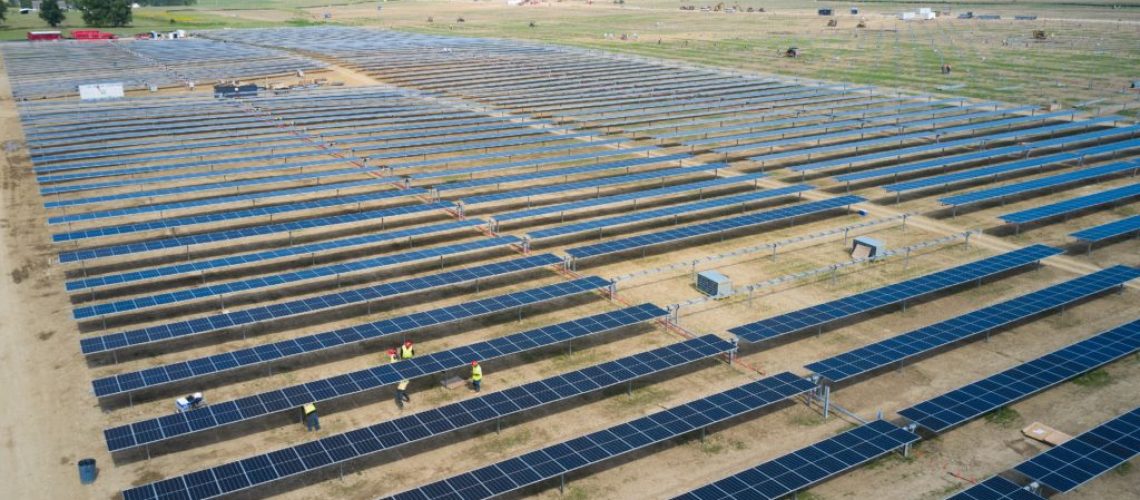The Hoosier State has a prohibitive residential PV market with net metering recently phased out, while its utility market enjoys 878.8MW of new projects
The solar market in Indiana has been restricted to large utility-scale projects in recent years as May 2017 saw the reversal of a net metering mechanism destroy the value of rooftop solar for its 6.8 million residents.
The Solar Energy Industries Association (SEIA) projects Indiana will add just under 7.4 GW of solar over the next five years, placing it within the top 10 states for solar development outlook. Currently there are eight projects operating in the state with 1.4 GW of power capacity.
Indiana’s Clean Energy Portfolio Standard (CPS) is significantly lower than comparable states. Known as the Comprehensive Hoosier Option to Incentivize Cleaner Energy (CHOICE) program, the utility program was enacted in May 2011 by Senate Bill 251 and sets a voluntary goal of generating 10% renewable energy off the grid by 2025.
With five investor-owned utilities operating in state, Indiana ranked third in the country in 2021 in total coal consumption and coal power generation, trailing just Texas and Missouri. Coal power represents 58% of Indiana’s electricity mix for the year, according to the Energy Information Administration.
While Indiana is the sixth largest producer of grain ethanol in the U.S., just 1.4 GW of solar and 2.3 GW of wind turbines power the state, or 2% and 8% respectively of the Hoosier State’s generation mix.
Incentives
On January 4, the Indiana Supreme Court ruled in favor of utility Vectren’s decision to end certain benefits for residential PV system owners. Vectren, now a CenterPoint Energy utility, argued a new subsidy scheme following a 2017 state law would short change residents who generate more energy than they consume, thwarting a net metering credit system.
The state’s Senate Bill 309, in place since May 2017, phased out retail rate net metering and replaced the former 1:1 kWh bill credit with a much smaller credit based on 125% of the utilities’ wholesale rate. That change in compensation resulted in a bill credit that is approximately 70-80% lower than what customers receive for retail rate net metering.
While this changed the level of compensation that solar homeowners would receive, it did not change the method by which the compensation rate would be applied. Homeowners would still be credited at that rate, multiplied by the kWh difference between the electricity that they imported from the grid and the electricity they exported to the grid.
Like most states, Indiana makes solar exempt from property taxes. Like all states and territories, residents are offered the federal Investment Tax Credit (ITC), which covers 30% of system costs. The ITC is now available to many customers as a direct payment following new provisions in the Inflation Reduction Act.
Community Solar
The Hoosier State does not yet have an active community solar program that allows for retail subscription to solar energy. Senator Shelli Yoder (D-Bloomington) introduced community solar legislation, SB 313, into the state in early 2021 but the bill has not yet been heard. Under the proposed legislation, Indiana utilities would be required to install at least five community solar projects within their service territory.
Yoder told local public radio station WFYI that community solar projects would provide more stable energy prices for lower-income residents and revitalize their communities. “Lower-income communities can use their newly attained saving toward other expenses, personal savings, or contribute to the economy,” Yoder told the station.
Notable project
Located 18 miles from the Ohio border in Modoc, Indiana, the 200 MW Riverstart Solar Project entered commercial operations in January 2022. With $180 million in capital contributions, Riverstart was built by EDP Renewables North America and provides enough power for 36,000 homes. Hoosier Energy, a rural electric cooperative, is the offtake customer for the project.
Following completion, EDP Renovaveis sold an 80% equity interest in Riverstart Solar to infrastructure fund Connor Clark & Lunn Infrastructure.
The project was procured as part of a plan between Colorado-based Hallador Energy and Hoosier Energy to develop up to 1 GW of renewable power near the Merom Coal Generation Station, which Hoosier expects to retire in May 2023.
For now Riverstart holds the title for largest solar project in Indiana, but the title may be usurped by NextEra Energy Resources, which has a 250 MW solar plus 180 MWh energy storage project in the development stages in Pike County, Indiana. That project is on track to be built by May 2024.
Up next
The previous stop on the pv magazine tour of state incentives was Illinois, and next on the tour will be Ohio.



